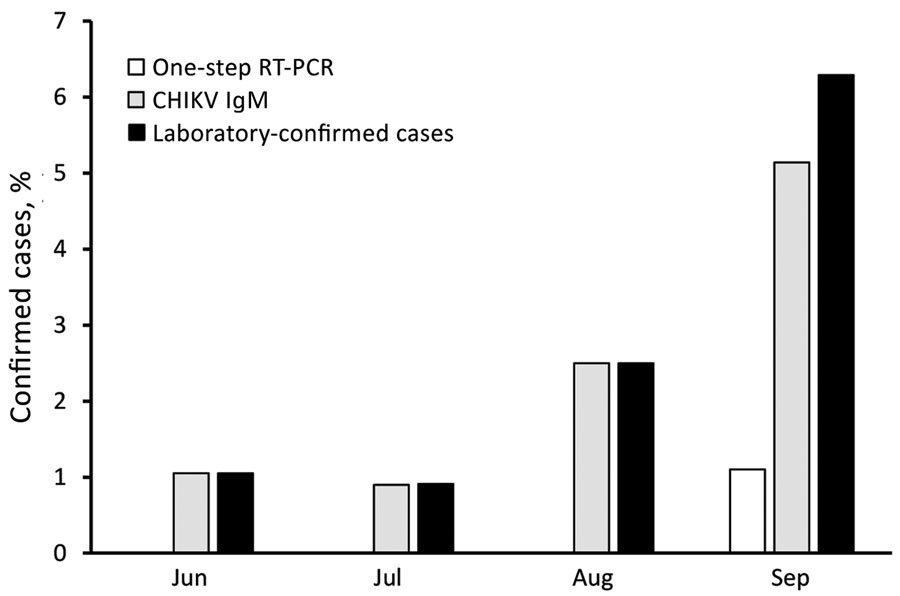Volume 26, Number 11—November 2020
Dispatch
Chikungunya Virus Infection in Blood Donors and Patients During Outbreak, Mandalay, Myanmar, 2019
Figure 1

Figure 1. Distribution of laboratory-confirmed cases of infection with CHIKV among blood donors, Myanmar, June–September, 2019. Laboratory confirmed cases were defined as RT-PCR or CHIKV IgM positive.CHIKV, chikungunya virus; RT-PCR, reverse transcription PCR.
1These authors contributed equally to this article.
Page created: July 31, 2020
Page updated: October 19, 2020
Page reviewed: October 19, 2020
The conclusions, findings, and opinions expressed by authors contributing to this journal do not necessarily reflect the official position of the U.S. Department of Health and Human Services, the Public Health Service, the Centers for Disease Control and Prevention, or the authors' affiliated institutions. Use of trade names is for identification only and does not imply endorsement by any of the groups named above.